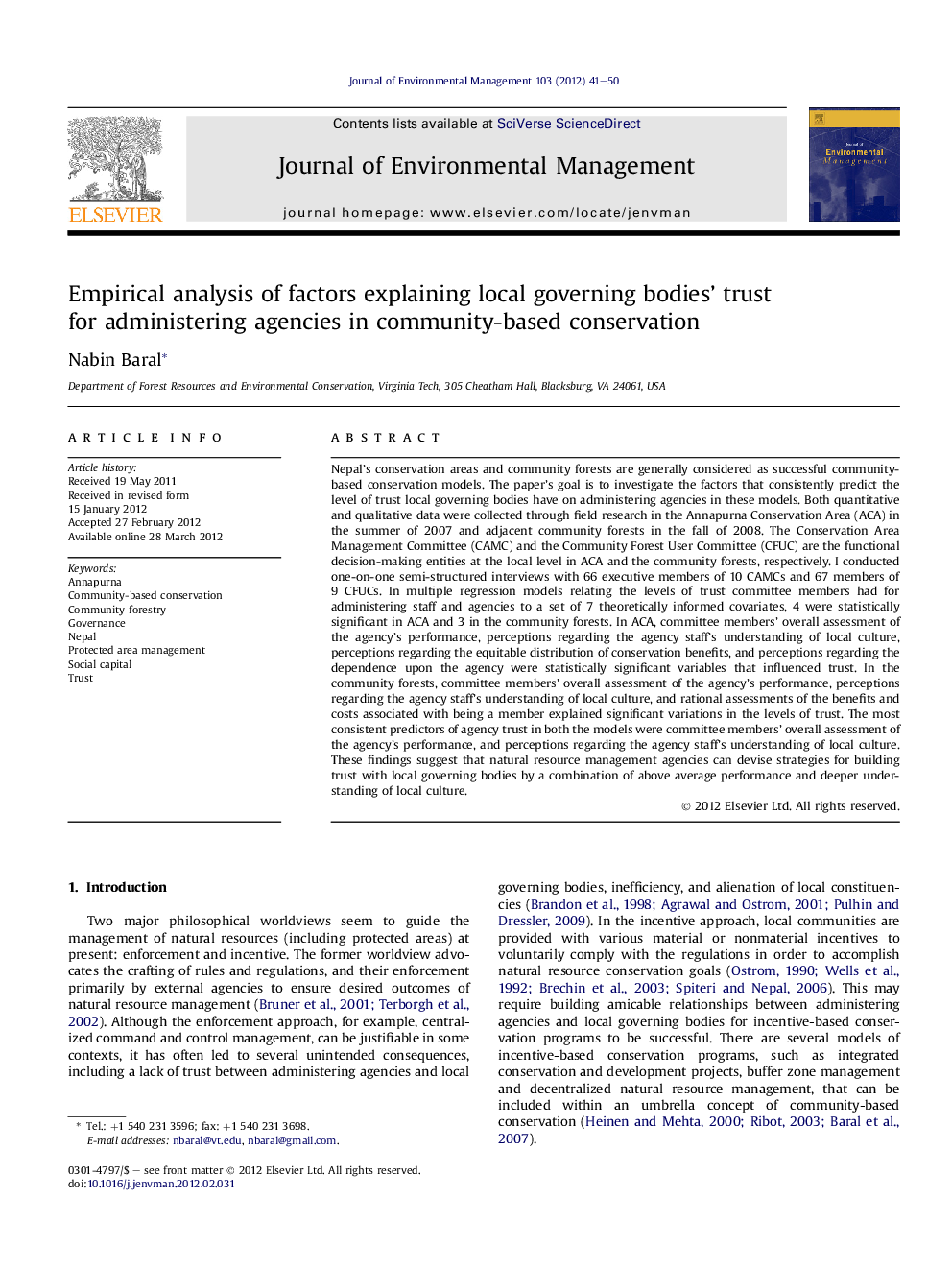| Article ID | Journal | Published Year | Pages | File Type |
|---|---|---|---|---|
| 1056640 | Journal of Environmental Management | 2012 | 10 Pages |
Nepal’s conservation areas and community forests are generally considered as successful community-based conservation models. The paper’s goal is to investigate the factors that consistently predict the level of trust local governing bodies have on administering agencies in these models. Both quantitative and qualitative data were collected through field research in the Annapurna Conservation Area (ACA) in the summer of 2007 and adjacent community forests in the fall of 2008. The Conservation Area Management Committee (CAMC) and the Community Forest User Committee (CFUC) are the functional decision-making entities at the local level in ACA and the community forests, respectively. I conducted one-on-one semi-structured interviews with 66 executive members of 10 CAMCs and 67 members of 9 CFUCs. In multiple regression models relating the levels of trust committee members had for administering staff and agencies to a set of 7 theoretically informed covariates, 4 were statistically significant in ACA and 3 in the community forests. In ACA, committee members’ overall assessment of the agency’s performance, perceptions regarding the agency staff’s understanding of local culture, perceptions regarding the equitable distribution of conservation benefits, and perceptions regarding the dependence upon the agency were statistically significant variables that influenced trust. In the community forests, committee members’ overall assessment of the agency’s performance, perceptions regarding the agency staff’s understanding of local culture, and rational assessments of the benefits and costs associated with being a member explained significant variations in the levels of trust. The most consistent predictors of agency trust in both the models were committee members’ overall assessment of the agency’s performance, and perceptions regarding the agency staff’s understanding of local culture. These findings suggest that natural resource management agencies can devise strategies for building trust with local governing bodies by a combination of above average performance and deeper understanding of local culture.
► Investigates the development of trust in two community-based conservation models. ► Of the 7 explanatory variables tested, 5 are statistically significant predictors of trust. ► Two variables are the most consistent predictors of trust in both the models. ► The agency’s performance positively influences trust. ► Agency staff’s understanding of local culture positively influences trust.
